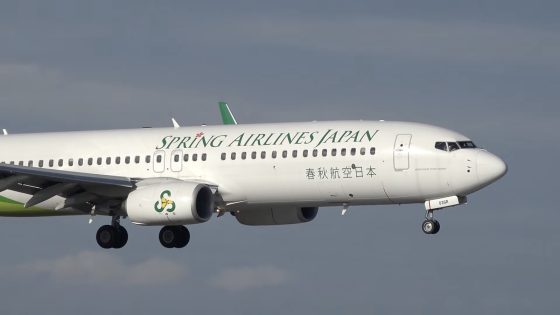A Spring Airlines Japan flight experienced a terrifying cabin pressurization issue on Monday evening, leading to a rapid descent that shocked passengers. Flight JL8696, departing from Shanghai, China, was cruising at 36,000 feet when, at 6:51 pm local time, it suddenly dropped to 10,000 feet in just ten minutes, prompting an emergency landing at Kansai International Airport near Osaka, Japan. Fortunately, no injuries were reported among the 191 passengers and crew.
- Spring Airlines Japan flight faced pressurization issue
- Emergency landing at Kansai International Airport
- Passengers experienced panic and fear
- Flight crew followed emergency protocols correctly
- Rapid descent rate was 2,600 feet per minute
- Previous incidents show similar emergency descents
The harrowing experience left many passengers shaken, with some even writing farewell notes as oxygen masks deployed. Flight attendants reportedly struggled to maintain composure during the incident, highlighting the emotional toll of such emergencies. How do airlines ensure passenger safety during such critical situations?
This incident raises questions about cabin safety and emergency preparedness. Passengers’ emotional responses underscore the psychological impact of in-flight emergencies, reminding US that safety measures are crucial. Key takeaways include:
- Rapid descents are standard procedure in pressurization emergencies.
- Flight crews are trained to handle such situations effectively.
- Passenger safety protocols are vital for emotional reassurance.
As air travel continues to grow, it’s crucial for airlines to prioritize safety and passenger well-being. Will this incident prompt further enhancements in aviation protocols?

































